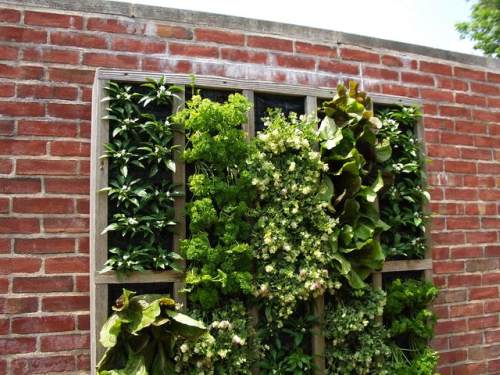Growing food at home in small spaces is possible! With a little knowledge and creativity you can supplement your groceries with home grown produce even in the smallest of spaces.
Saving money is an issue for almost everyone. Perhaps you’re having a hard time doing so right now, with the ever increasing bills you have to face every month. Growing your own food, even a small amount, can help you save on your weekly groceries. Consider the cost of buying fresh herbs from the supermarket. It may be several dollars for a single bunch compared to having your own plant which you can continually harvest as you need.
In an interview with the Sydney Morning Herald discussing the financials of growing your own food, Rochelle Stone calculated that her family’s “savings in herbs alone over the last 11 months are at least $350”. Impressive!
So you want to grow, but only have limited space? No worries! There are a range of methods for growing your own food in small and limited spaces.
The Simplest of All – In Containers!
Perhaps you only have a small yard, are sharing a courtyard with other renters or have no yard at all. Container gardening is a great option for those with limited space or who need a less permanent, potentially mobile growing solution.
As long as they receive ample sunlight, courtyards, balconies and window sills are all prime candidates for container gardens. Growing indoors is also an option! In fact growing indoors might allow you to grow some plants you wouldn’t normally be able to in cooler climates.
Ensure that the your containers allow for drainage and are large enough for your plants to grow. Also remember to water your pots regularly since soil in containers tends to dry out quickly.

A courtyard filled with food – utilising containers, “no-dig” raised garden beds and vertical space. Image sourced from Container Gardening for Food.
Get Vertical
If you have limited horizontal space to dedicate to growing food, try looking at things from a different perspective. Vertical gardening is all about making use of your vertical space by growing food upwards via trellises, stacked planters or wall mounted containers. Vertical gardening encourages you to explore your creativity and the methods for growing upwards are as diverse as the plants that you can grow! Crops such as tomatoes, asian greens, berries, kitchen herbs, salad greens, pole beans, cucumbers, peas, winter squash, sweet potatoes and melons should have no problems growing up, up and away!
Care for some strawberries? Plant some in hanging planters and watch them thrive!

Wall mounted planter. Image sourced from CalFinder.com.
If you’re even slightly handy you can build your own vertical growing systems from common, recycled or repurposed materials, such as an old spice rack or pallet create. If you’re not as DIY inclined you can buy ready made, dedicated vertical systems from companies such as Vertical Grow or some local nurseries.
On the Verge…
Completely out of space? Want to expand your growing power? Verge gardening might be an option. Also known as nature strip or curbside gardening, verge gardening is the practice of growing an edible garden alongside the footpath (between the road and your property).
Verge gardening has become very popular is some cities around the world, sometimes taking the form of a community garden project. However not all local governments may be onboard with the idea. So before heading out and ripping up your nature strip to transform it from unproductive lawn into a productive food growing space, it is best to check with your local government. Special considerations may also need to be made to account for underground services such as water, gas and sewage pipes which could be impacted from gardening in such spaces.
We hope this article has provided you with some insight into a few of the ways you can grow food in small spaces. Be creative in more ways the one, get out there and Grow It Yo’ Self!
For more information about growing in small spaces we recommend checking out Gardening Australia’s Small Garden Factsheets.
Header image source from Fiesta Farms.
